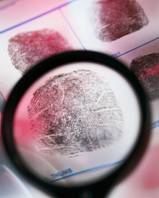Observation Activities
by
Natasha Cooke
In order to develop the inquiry process skills and spark the curiosity of your students, you can use these quick activities as motivation and extension activities.
Activity #1: Count off each student as 1 or 2, A or B, or Apples and Bears, whatever you like! Pair off each student. Make sure a #1 is standing next to a #2.

(Observe these two women. Can you list what their differences are?)
Tell all the students labeled 1 to turn and face the left wall and close their eyes. Don’t peek!
As you count to 10, instruct students #2 to change four things (you can increase or decrease the amount) about their appearance (e.g., take off a bracelet, put a notebook in their hand, turn their hat around, etc…). Tell students #1 to open their eyes and turn to face their partner and tell them to observe their partner.
Name the 4 things their partner changed about their appearance.
Activity #2:
Press the graphite from a pencil on a small piece of white paper.

Instruct your students to rub their right thumb on the graphite. Take a piece of clear plastic tape and have them press their right thumb on the tape. Carefully place the piece of tape on another small piece of white paper.
Have the students predict what the other thumbprint will look like. Repeat with the left thumb. (If students want to try something different like use their big toeprint, let them do it! Exploration is fun and innovative!)

Observe and compare thumbprints.
Questions or comments? E-mail me.
|